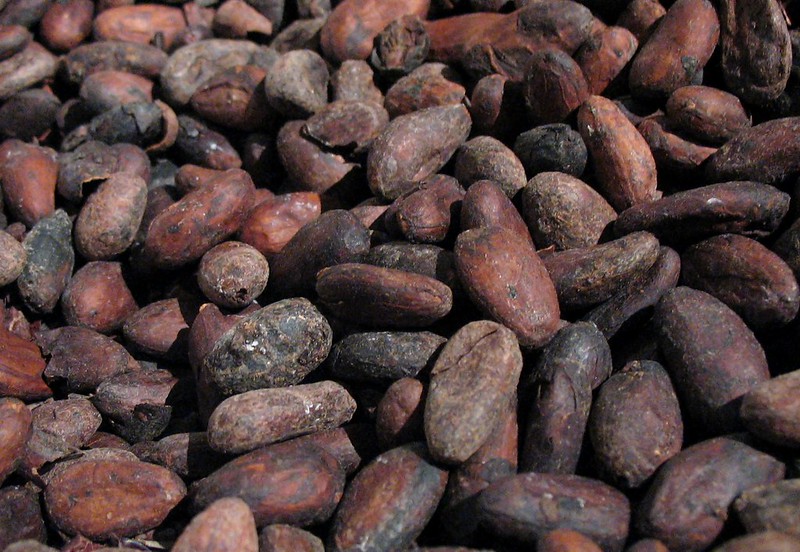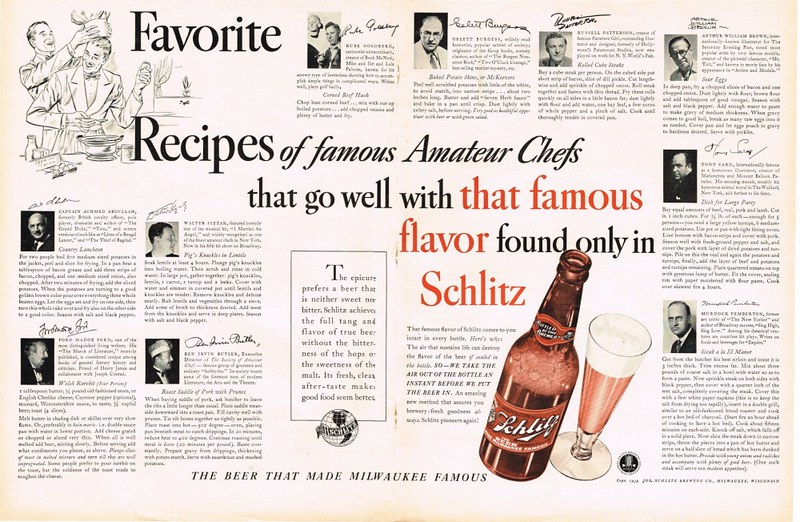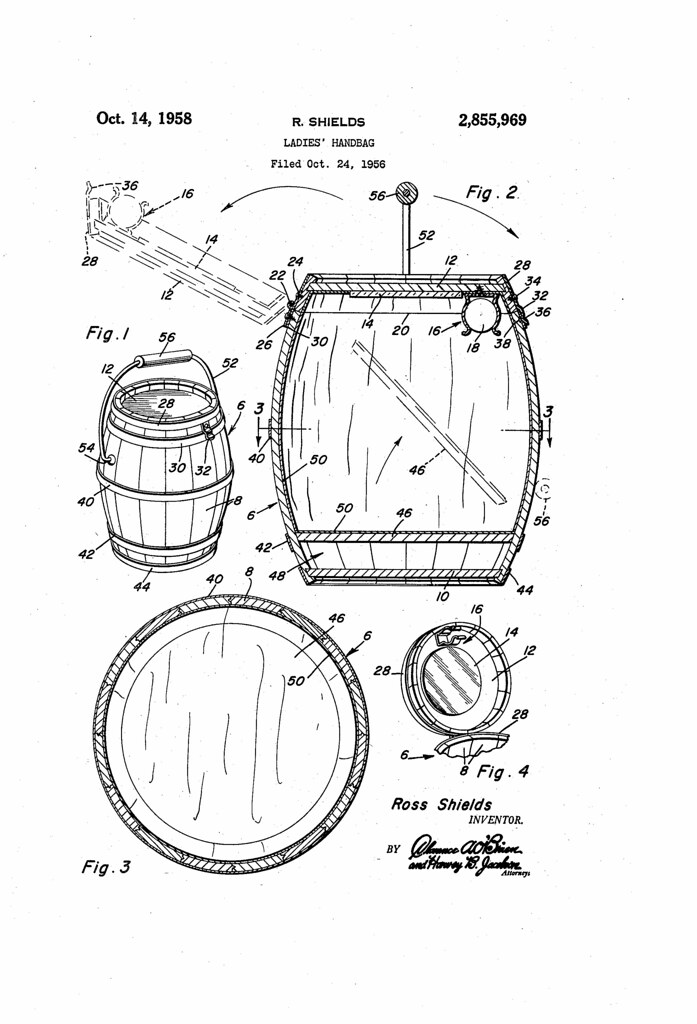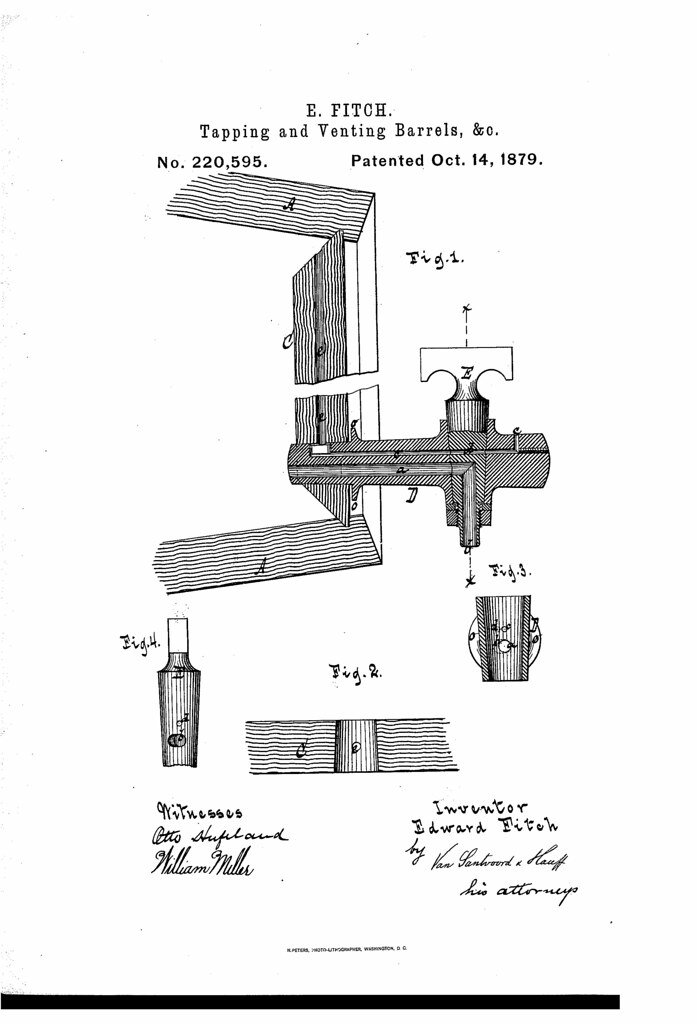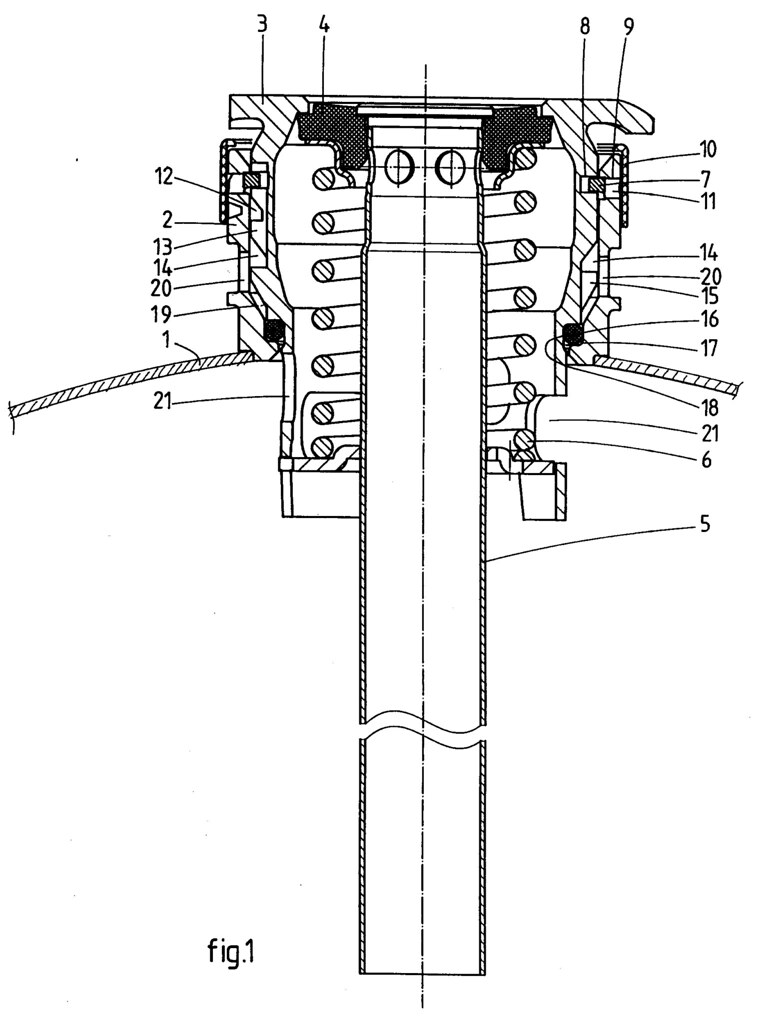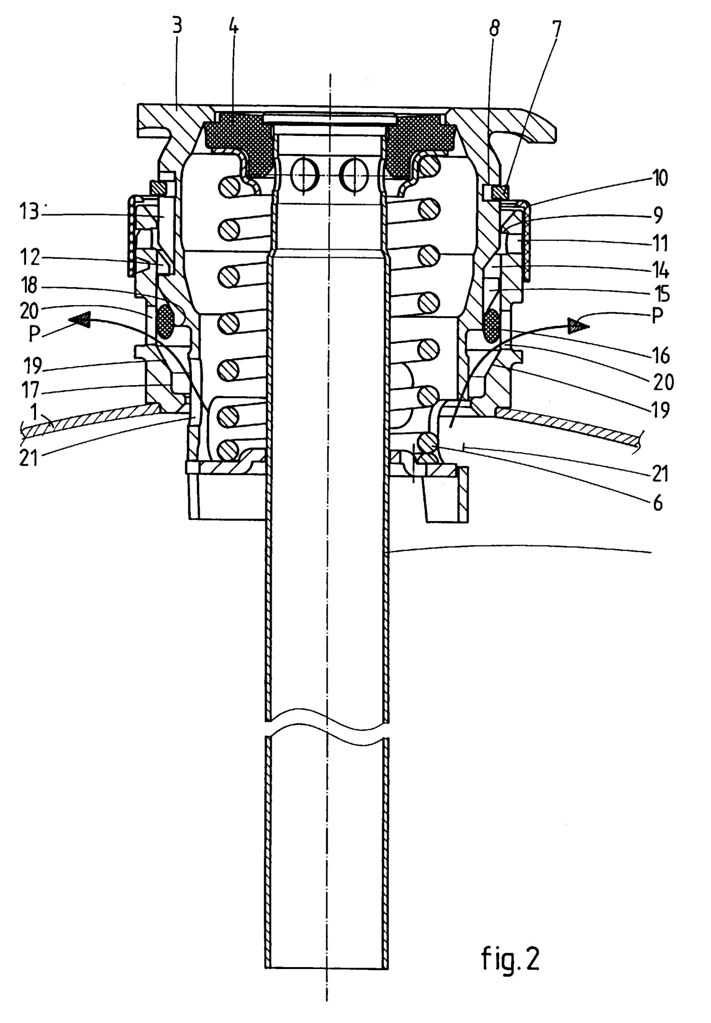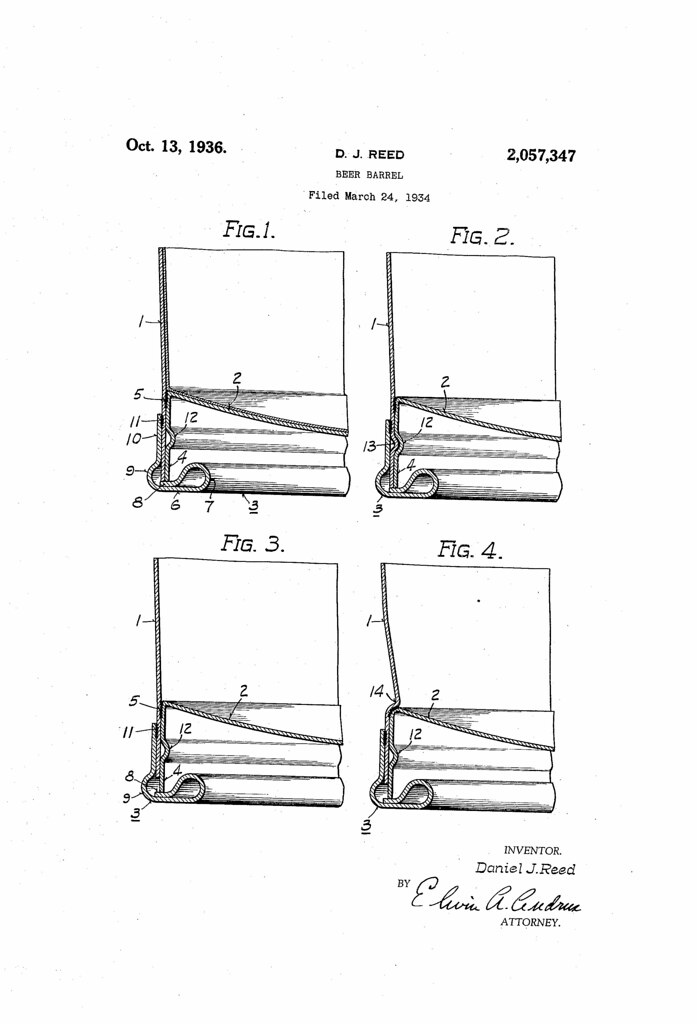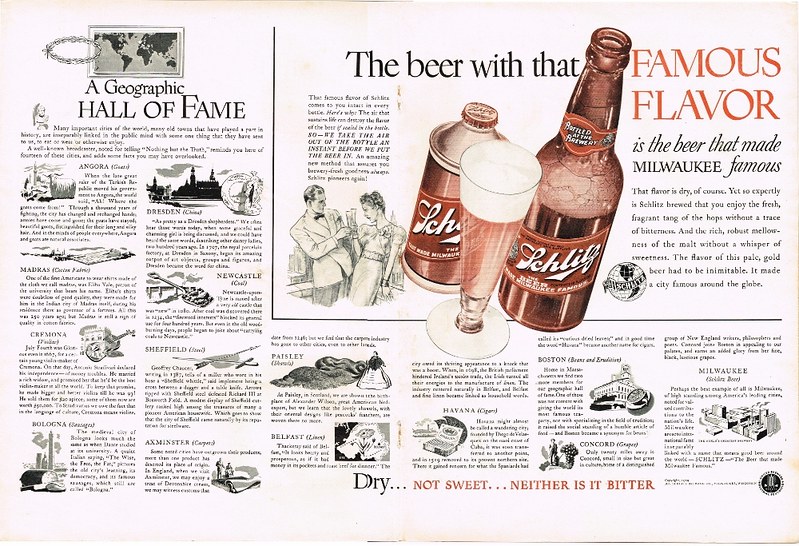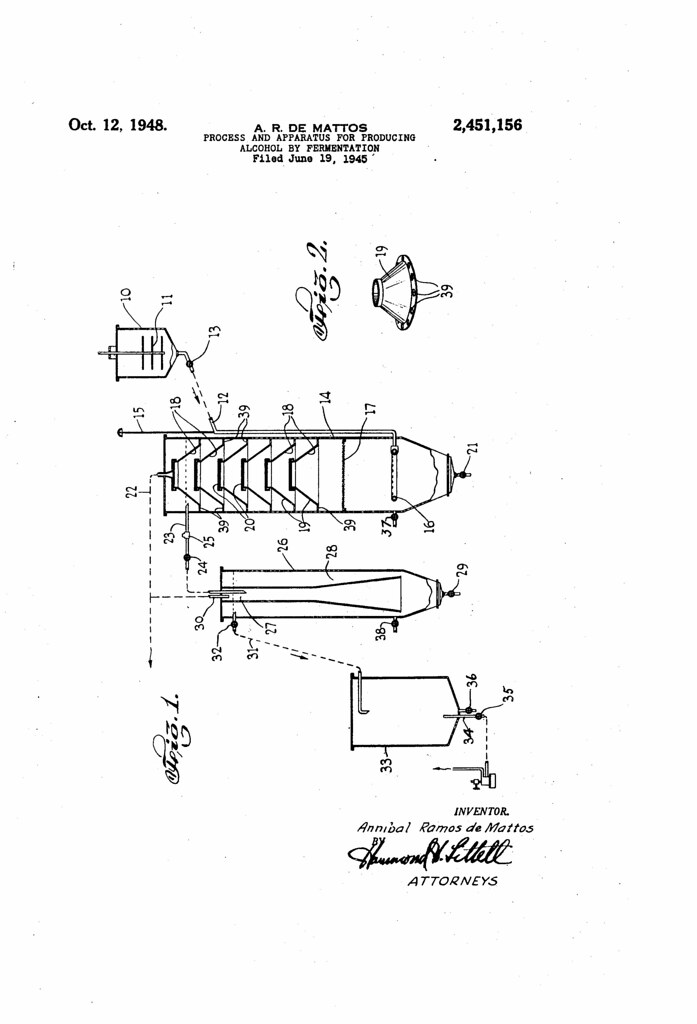
Saturday’s ad is for Schlitz, from 1940. In this ad, a trivia bonanza, all about how things got their names. “What’s in a Name? Everything!” There are sixteen little histories of how different things got their names, which is a lot for an ad, even a double truck. And then there’s just one more origin story:Schlitz.



